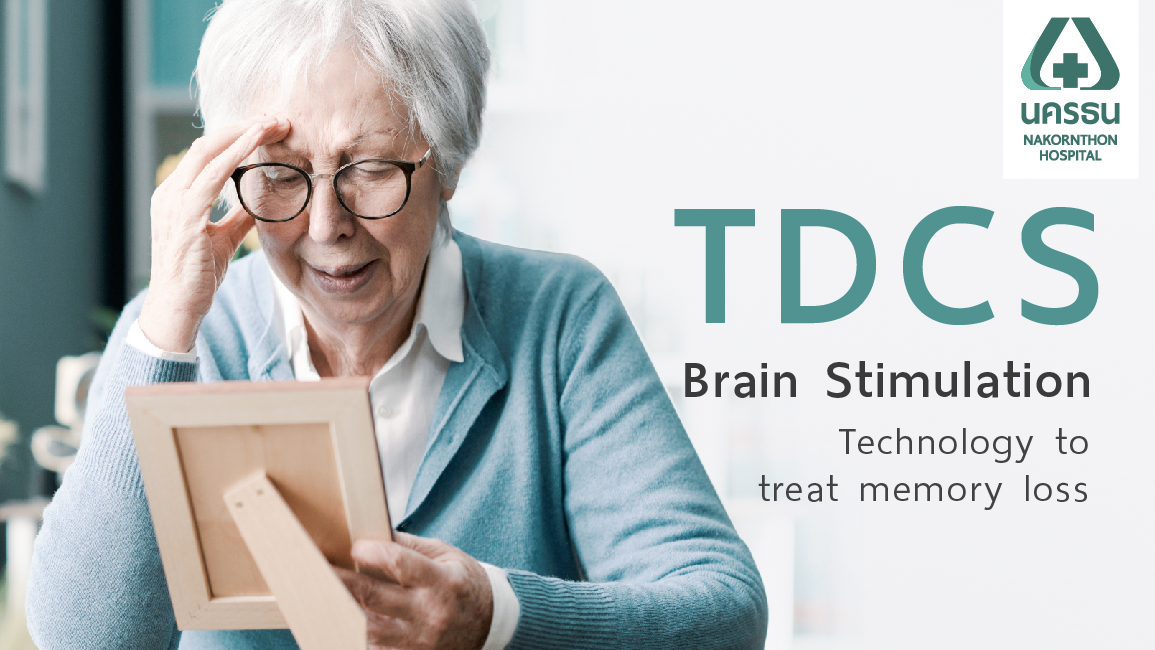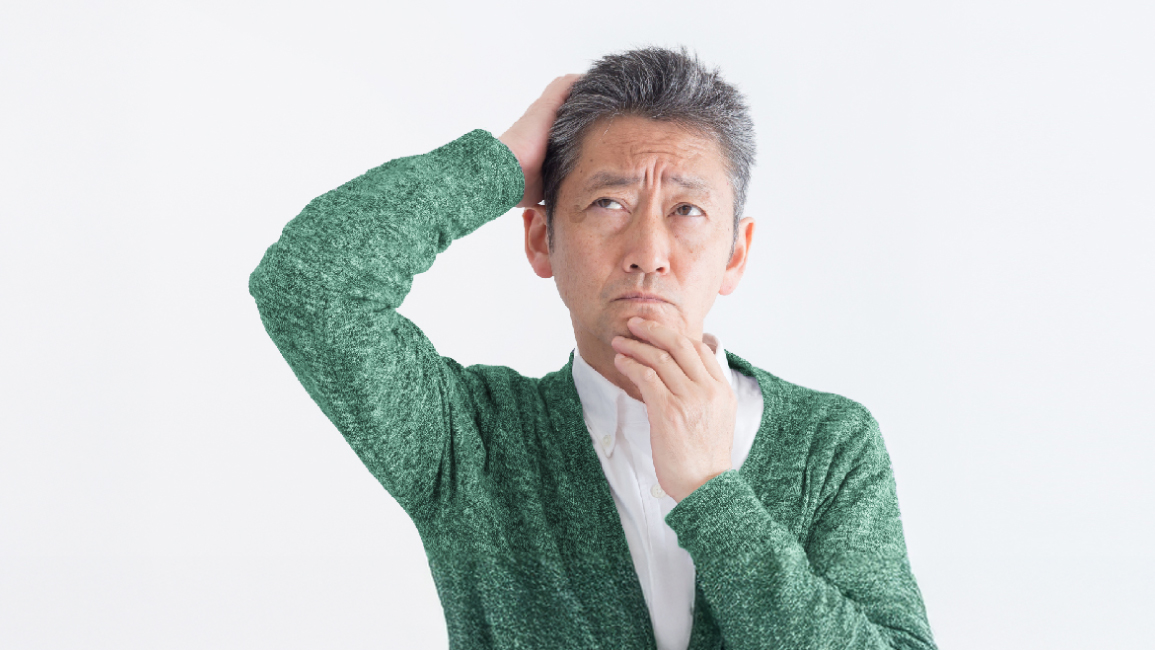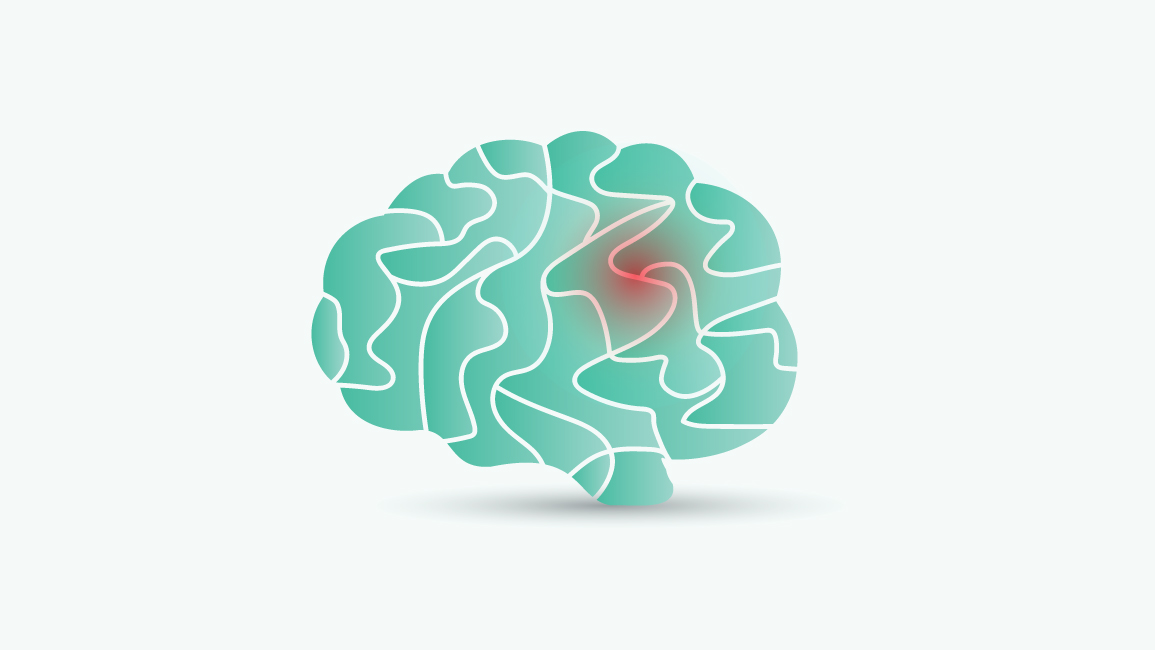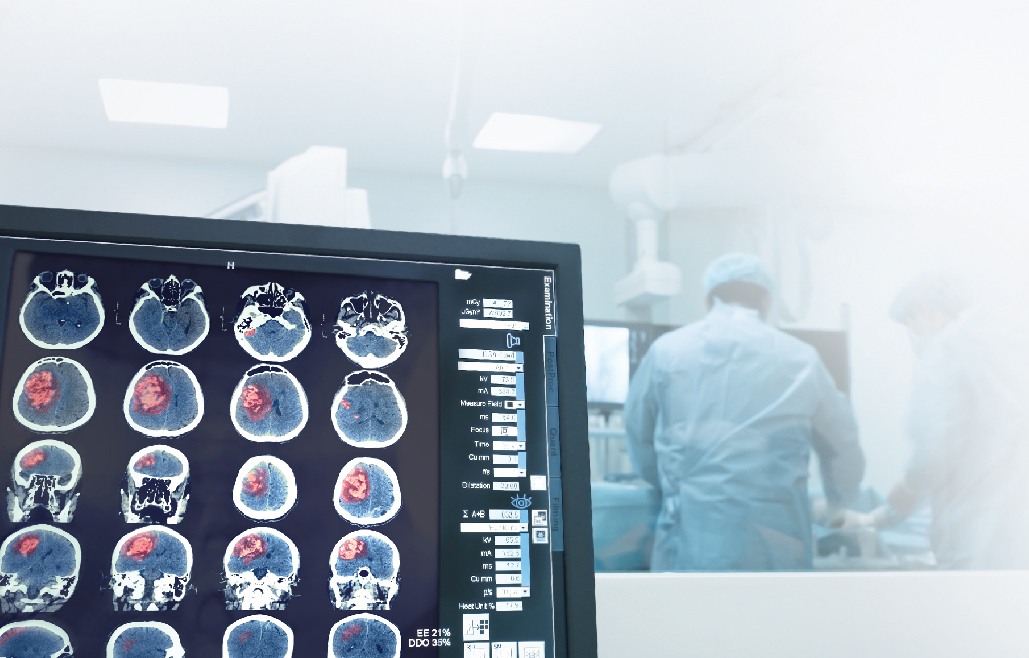Get to know the Transcranial direct current stimulation
Center : Neurology Center
Article by : Dr. Roongthip Chaiteerakij

TDCS, or Transcranial direct current stimulation, is another alternative treatment for patients with regression symptoms. Patients with weak limbs from stroke or people with depression who help to heal and restore brain function, along with drug treatment and physiotherapy, make treatment more effective. You can go back to normal life.
TDCS treatment
Treatment by Transcranial direct current stimulation, sends a mild electrical current to stimulate the brain through the skull (Transcranial Direct Current Stimulation : TDCS) using a tool that transmits approximately 1-2 mA of light electricity through an electrode to the skull. It takes about 10-30 minutes of stimulation at a time, 2-3 times a week, causing the neural circuitry to function normally and the neurotransmitters secreted.
- Treat regression symptoms of Alzheimer's disease, Memory and cognitive enhancer is done by stimulating the prefrontal cortex or anterior temporal cortex to increase memory and speed up the processing of the brain (speed of cognitive) or neuroplasticity.
- Treatment of depression in people who have been taking the drug continuously for 1 year or more and have not seen the effect by increasing the functioning of the brain, the DLPFC part, which is responsible for controlling the limbic system, improves mood.
- Treat limb weakness by stimulating with TDCS to improve the function of the nerves of the weak limb muscles, such as increasing the ability of the hand to squeeze the fingers. If stimulation is performed in conjunction with physical activity, the recovery will heal faster.
Person who is suitable for treatment
- People with limb weakness from cerebrovascular stenosis
- People with speech impairment, difficulty communicating, clogged arteries or dementia.
- People with Alzheimer's disease, early to middle stage.
- Patients with depression who were treated with drugs did not improve.
TDCS procedure
- Treatment depends on where we want to stimulate the brain. The doctor will measure where the electricity is released.
- When the position is set, 2 power transmission line will be attached, the input current and the output current. Then release the electric current.
- During treatment, the patient simply sits idly by. There is no pain, but the patient may feel like an ant bite, like a small needle, prick, or itch. These symptoms usually disappear within 30-60 seconds, or redness of the stimulating area can sometimes occur.
TDCS treatment phase
In most treatments, 5-10 session start to show better results in the first month, should come in for treatment twice a week. Patients can visit the doctor to ask for symptoms and allow doctors to diagnose and perform tests before receiving treatment.
Caution
- Patients with wounds, infections, lesions, or vascular lesions in the scalp area provoked.
- Have a history of easy bleeding or have a history of seizures.
- Patients using Demand-Type Cardiovascular Defibrillators.
- Patients with cerebrovascular obstruction / rupture in the acute phase. Should be careful in treatment.
- Patients receiving certain drugs that may affect TDCS stimulation.
Treatment safety
- Electric treatment - There is no use of radiation that is harmful to the body for both short and long term.
- High security- There are no harmful side effects to the brain, as this type of stimulation uses a very weak current of about 1-2 mA, so it does not affect any brain cells.
- It is a treatment that does not require anesthesia and is painless.
Consult Online
Article of Neurology Center





